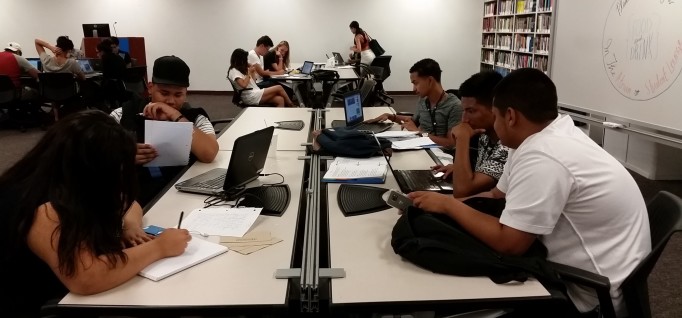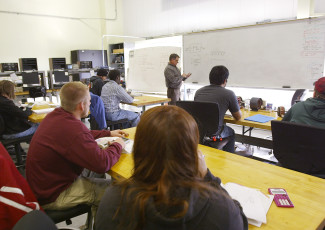Focus on the First Year
By Sarah Asp Olson
December 22, 2015
First-year experiences at two community colleges lead to student engagement and success.
What happens in the first year a new student sets foot on a community college campus is vitally important in determining his or her future.
The importance of setting up students for success early on isn’t a new idea. In fact, nearly 30 years ago, in The Freshman Year Experience, educator John N. Gardner and his co-authors wrote, “The freshman’s most critical transition period occurs during the first two to six weeks.” According to the authors, of the students who drop out during the semester, the majority do so during that first six-week period.
Many of today’s students face a similar uphill battle as they enter community college.
“We often don’t see students graduate, let alone go from fall to spring [or] fall to fall, because they often don’t get a good start in the first year,” says Scott Evenbeck, president of Stella and Charles Guttman Community College (GCC), in New York City. “What happens in the first year is absolutely critical.”
Shaping the first-year experience
GCC welcomed its first class in 2012. The newest community college in the CUNY system spent four years developing its innovative and comprehensive First-Year Experience to ensure that its population of mostly first-generation, low-income students were engaged and empowered.
GCC’s First-Year Experience starts with a two-week summer bridge program. The mandatory session allows students to get to know the college and begin to develop a sense of belonging.
Incoming students, who are required to enroll full-time in their first year, are placed into cohorts of 25, called Houses. Each component of GCC’s First-Year curriculum — including the City Seminar and the Ethnographies of Work courses — is designed to keep students focused on their pathways to graduation.
“The Complete College America people are putting huge impact on how important purpose is for students,” Evenbeck says. “It can make all the difference if they have a purpose.”
GCC graduated its first cohort in 2014. Of the inaugural 289 students, 81 — or 28 percent — graduated within two years. Forty-nine percent of the first cohort graduated in three years, and the second entering cohort had a 30 percent two-year graduation rate; comparable two-year public colleges in large cities typically graduate around 14 percent.
GCC’s retention and graduation rates echo what the Center for Community College Student Engagement (CCCSE) found in a three-year survey that includes a look at first-year experiences.
The survey found that nondevelopmental students who reported participating in a first-year experience program were 1.71 times more likely to persist fall to spring and 1.49 times more likely to persist fall to fall.
Redesigning for engagement
Few institutions have the opportunity to start from scratch when implementing first-year experiences. Colleges looking to revamp an existing program face different challenges.
In 2007, 22 percent of students entering Durham Technical Community College, in North Carolina, participated in the school’s optional orientation, and 36 percent enrolled in elective college success courses, according to the CCCSE SENSE benchmark study. What’s more, 67 percent of students were not even aware the orientation program existed.
This isn’t unusual for colleges with elective first-year experience offerings. According to the CCCSE, nearly 60 percent of colleges offer some type of First-Year Experience program or course, but less than 30 percent of students participate.
“We had years of persistence data that showed that target students who took our First-Year Experience course persisted at significantly higher rates than target students who didn’t take the course,” says Gabby McCutchen, Durham Tech’s dean and department head of student engagement and transitions. “We knew that the course helped students. We wanted to help more students by making it less escapable.”
Starting in 2009, Durham Tech began requiring orientation and advising. In 2013 it made the First-Year Experience course, ACA 122 — where students focus on goal discernment, learning strategies and college culture — a co-requirement for all developmental-education courses and first-semester college-level English.
Results have been positive: From fall 2014 to fall 2015, persistence rates for students enrolled in ACA were 69 percent, compared with 43 percent for students not enrolled in the course. Engagement numbers also rose dramatically: More than 90 percent of entering students reported attending orientation, and 55 percent enrolled in a student success course. Just 5 percent said they were not aware of orientation.
Photo courtesy of Stella and Charles Guttman Community College







